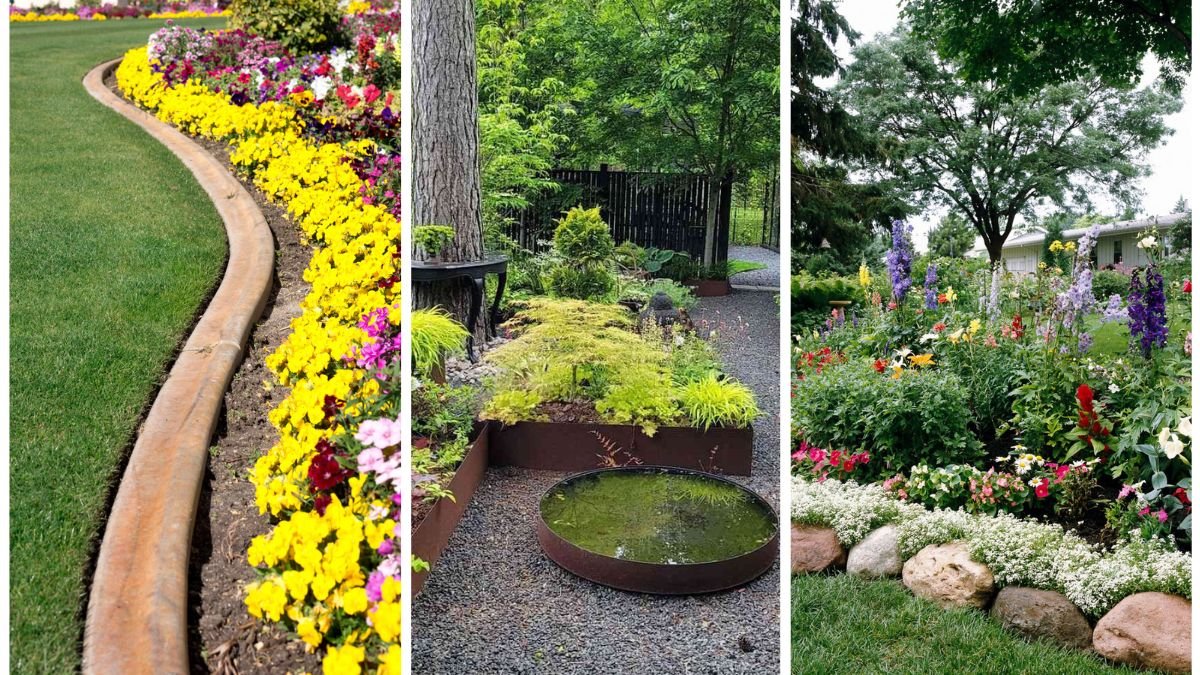A well-designed garden is about more than planting flowers and shrubs—it’s about creating structure, flow, and definition. One of the simplest yet most effective ways to enhance your garden’s aesthetics is by adding edging around your flower beds. Garden edging not only separates different garden zones but also prevents grass and weeds from encroaching, directs water, and adds a polished, professional look. In this article, we explore five creative garden edging ideas that can define your flower beds and elevate the overall appeal of your outdoor space.
1. Stone and Rock Edging: Timeless Elegance
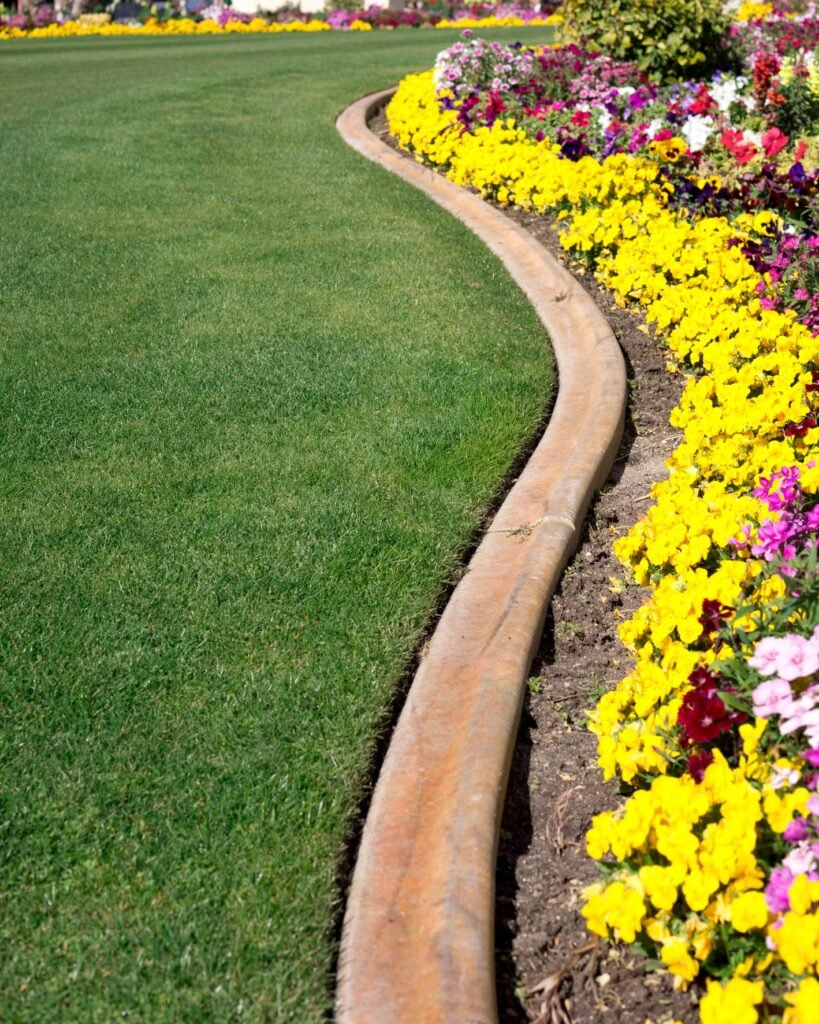
Stone and rock edging is a classic option that adds natural beauty and durability to your flower beds. This type of edging can range from neatly stacked stones to irregular boulders, depending on the look you want to achieve.
- Types of Stones: Choose from river rocks, flagstones, slate, or cobblestones. Smaller stones are ideal for curved beds, while larger stones create a bold, dramatic effect.
- Installation Tips: For a tidy look, bury stones slightly into the soil to prevent shifting. Use a layer of sand or gravel underneath to improve stability.
- Design Ideas:
- Curved Beds: Soft, flowing curves with stones create a natural, cottage-style appearance.
- Raised Beds: Stack stones slightly higher than the soil level for a raised bed effect, giving flowers more prominence.
- Benefits: Stone and rock edging is highly durable, weather-resistant, and low-maintenance. It works in both formal and informal garden designs, making it versatile.
Stone edging not only defines your flower beds but also adds a timeless, elegant touch that blends seamlessly with greenery.
2. Brick and Paver Edging: Structured and Classic
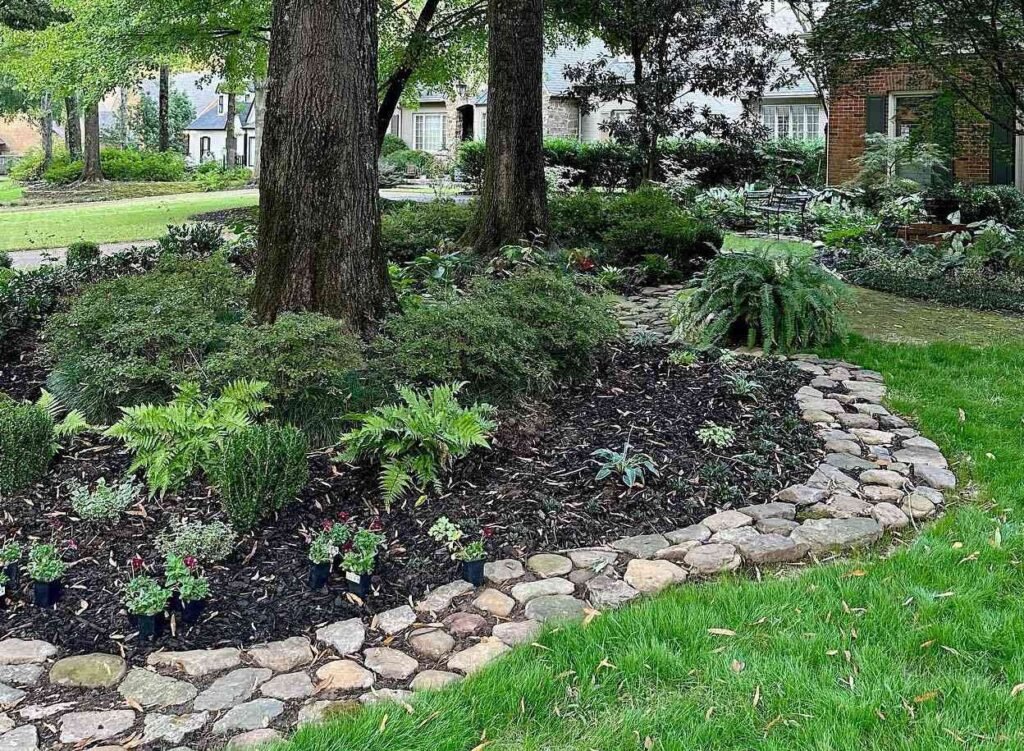
Bricks and pavers are perfect for creating a formal, clean-lined garden border. They are easy to install, affordable, and available in various colors, textures, and sizes.
- Installation Methods: Lay bricks flush with the soil for a subtle look or slightly raised to create a prominent edge. A simple sand or mortar base ensures stability and longevity.
- Patterns and Designs:
- Straight Lines: Perfect for formal gardens and symmetrical beds.
- Herringbone or Zigzag Patterns: Adds texture and visual interest along pathways or flower beds.
- Color Choices: Traditional red bricks create warmth, while gray or white pavers offer a modern, minimalist look.
- Benefits: Brick edging is highly versatile, complements most garden styles, and provides a clear, durable boundary that separates grass from flower beds.
Brick or paver edging gives your garden a polished, classic look while clearly defining planting areas.
3. Metal Edging: Sleek and Modern
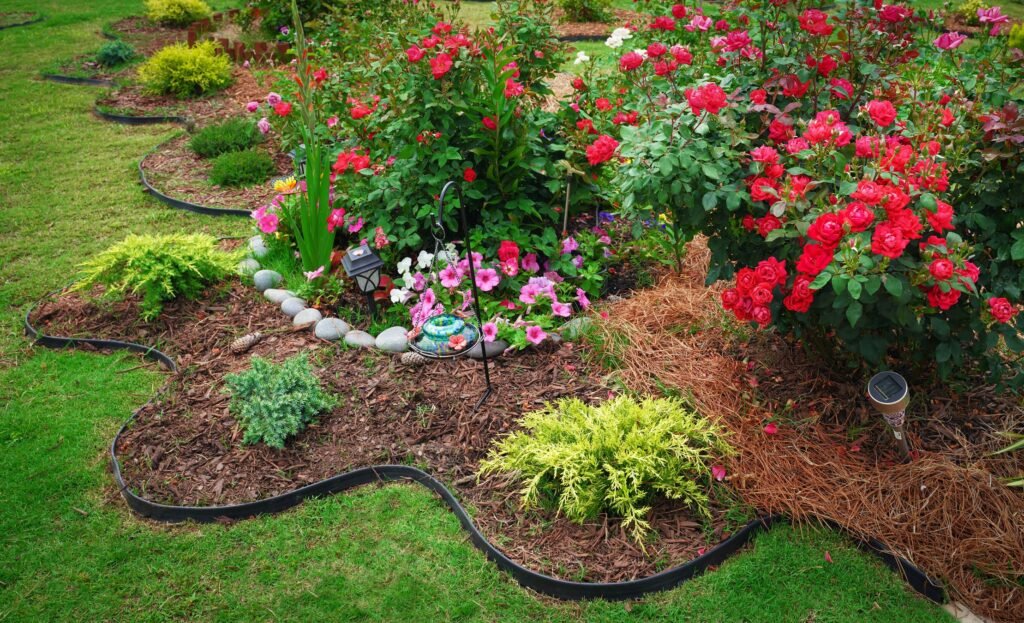
Metal edging is a contemporary option that provides clean lines and durability. Made from materials like steel, aluminum, or corten steel, metal edging is ideal for modern garden designs and minimalistic landscapes.
- Installation Tips: Metal strips are typically installed along the soil line and secured with spikes. They can be bent to follow curves, offering flexibility in design.
- Design Options:
- Straight Edges: Perfect for geometric flower beds or borders along pathways.
- Curved Edges: Create flowing, organic shapes that contrast with hardscape elements.
- Advantages: Metal edging is long-lasting, low-maintenance, and rust-resistant (especially aluminum or coated steel). Its thin profile ensures a seamless transition between lawn and flower beds without interrupting the natural flow of the garden.
Metal edging is ideal for gardeners who prefer a sleek, modern aesthetic while maintaining functionality.
4. Wood and Timber Edging: Natural and Versatile
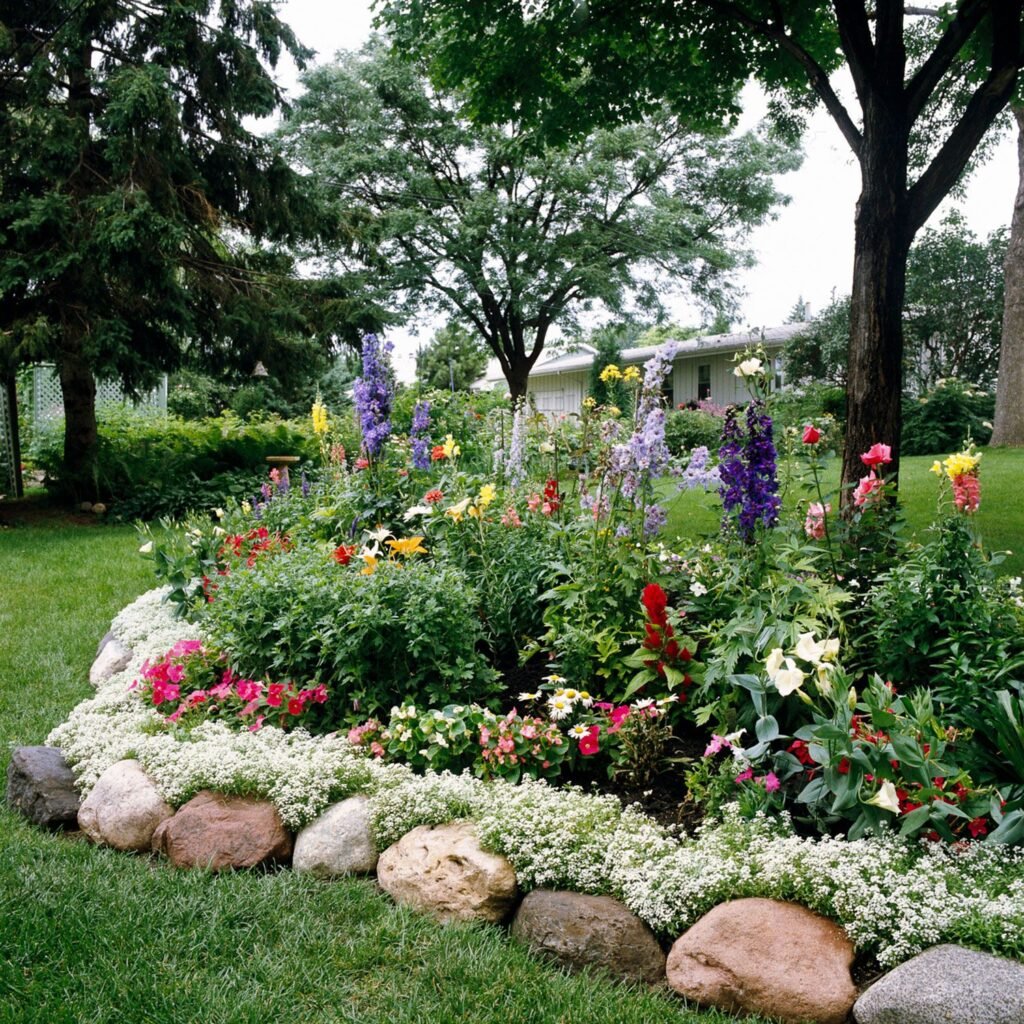
Wooden edging brings warmth and an organic feel to flower beds, blending seamlessly with natural landscapes. From rustic logs to polished timber planks, wood offers endless creative possibilities.
- Types of Wood: Pressure-treated timber, cedar, redwood, or reclaimed wood are popular choices due to their durability and resistance to decay.
- Installation Tips: Use stakes or wooden pegs to secure planks vertically or horizontally. Ensure the wood is treated or sealed to withstand moisture and insects.
- Design Ideas:
- Rustic Style: Half-buried logs or round timbers create a natural, woodland garden feel.
- Formal Beds: Neatly cut planks create geometric patterns and clean edges for a structured look.
- Raised Beds: Combine wood edging with soil mounding to create elevated flower beds that draw attention.
- Benefits: Wood is aesthetically warm, versatile, and allows for creative design. It’s ideal for gardens that emphasize a natural or cottage-style ambiance.
Wood edging not only defines flower beds but also adds texture and organic charm to the garden.
5. Plant-Based Edging: Soft and Lush
For a living, green border, plant-based edging uses low-growing plants to define flower beds. This method softens garden edges and adds continuous color, texture, or fragrance.
- Popular Choices:
- Lavender: Fragrant, colorful, and low-maintenance.
- Hosta: Provides lush foliage along shaded borders.
- Boxwood or Dwarf Holly: Offers a formal, structured look.
- Creeping Thyme or Sedum: Ideal for ground-cover edging that blooms seasonally.
- Design Tips:
- Keep plant height lower than surrounding flowers to maintain visibility.
- Combine different textures or colors to create layered effects.
- Consider seasonal rotation to maintain interest year-round.
- Benefits: Plant-based edging is eco-friendly, encourages biodiversity, and creates a seamless, natural transition between lawn and flower beds.
Living edges add softness, fragrance, and visual continuity to your garden while clearly defining flower bed boundaries.
Additional Tips for Choosing Garden Edging
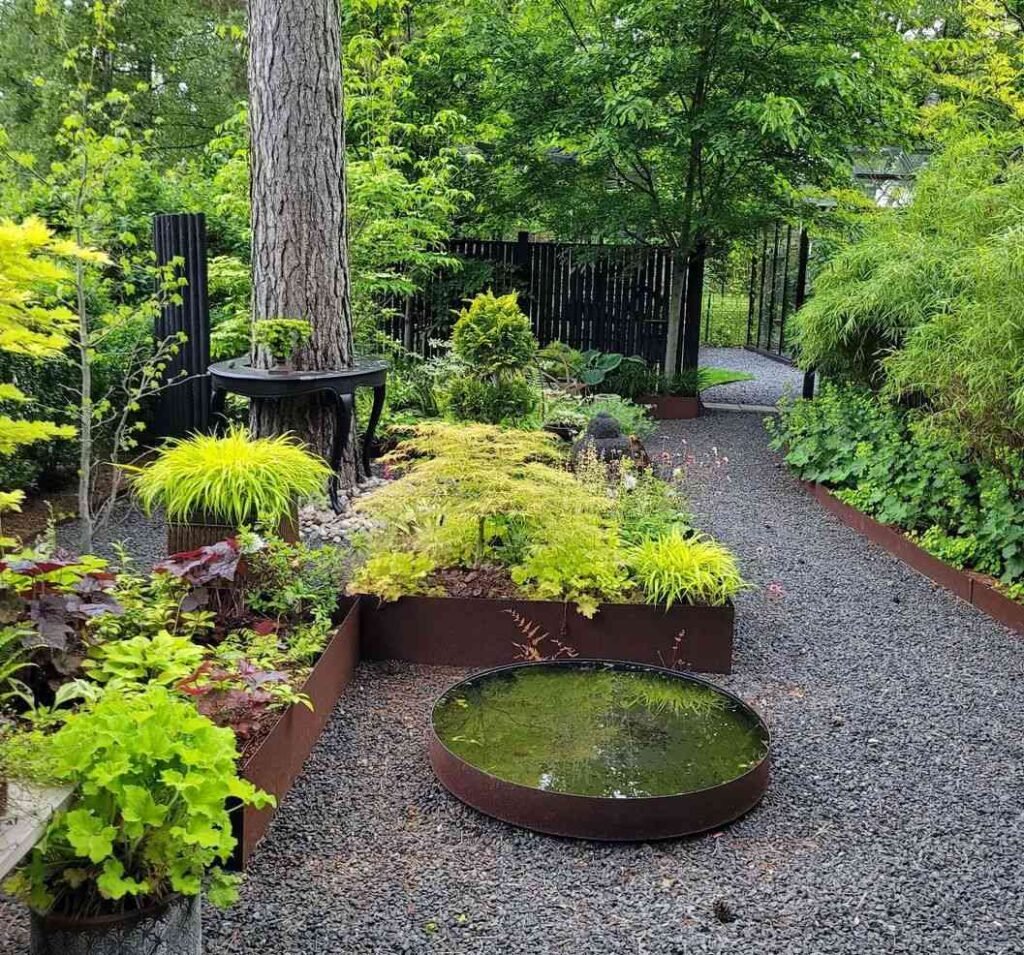
- Consider Garden Style: Match the edging material with the overall garden theme. Stone and brick suit formal gardens, while wood and plant borders complement rustic or cottage styles.
- Durability and Maintenance: Assess how much maintenance you are willing to invest. Stone, brick, and metal require minimal upkeep, while wood and plant-based edges may need periodic care.
- Height and Visibility: Ensure edging height is proportionate to your flower beds. Too low may be subtle, while too high may look intrusive.
- Curves vs. Straight Lines: Curved edges create a soft, natural look, while straight edges give a formal, structured appearance. Mix both for dynamic garden designs.
- Integration with Hardscape: Coordinate edging with paths, patios, or water features to create a cohesive outdoor space.
Conclusion
Garden edging is a small but impactful design element that transforms flower beds from ordinary to extraordinary. Whether you choose timeless stone, classic brick, sleek metal, warm wood, or soft plant-based borders, edging provides structure, defines spaces, and enhances the overall aesthetics of your garden.
By carefully selecting materials, styles, and placement, you can create a cohesive, visually appealing, and functional garden that stands out year-round. Edging not only keeps your flower beds neat but also adds depth, texture, and character, making your garden a truly inviting and polished outdoor space.
Investing in creative garden edging is a simple yet effective way to elevate the look of your garden, ensuring that every flower bed makes a statement and every walk through your garden is a pleasure.
